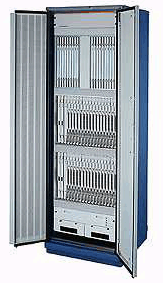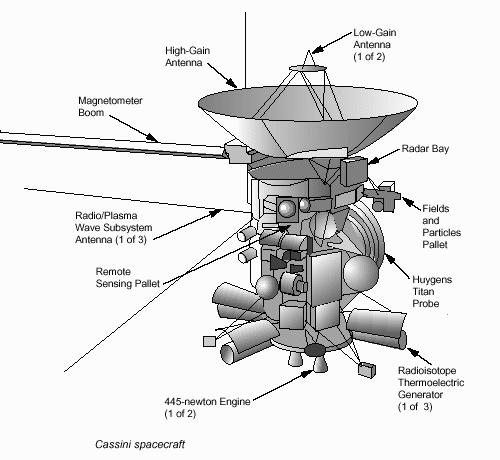![[acm_logo]](Gif/acm_logo2.gif)
![[acm_logo]](Gif/acm_logo2.gif)
|
Spin is a popular open-source software tool, used by thousands of people worldwide, that can be used for the formal verification of distributed software systems. The tool was developed at Bell Labs in the original Unix group of the Computing Sciences Research Center, starting in 1980. The software has been available freely since 1991, and continues to evolve to keep pace with new developments in the field. In April 2002 the tool was awarded the prestigious System Software Award for 2001 by the ACM. |
Quick Links
|
|
 |
 |
 |
 |
 |
 |
 |
 |

Recommended (introductory):
Some recommended books on general programming techniques:
Recommended rules for safety critical coding:
| Flood Control Three examples of inspiring applications of Spin in the last few years include the verification of the control algorithms for the new flood control barrier built in the late nineties near Rotterdam in the Netherlands. The verification work was carried out by the Dutch firm CMG (Computer Management Group) in collaboration with the Formal Methods group at the University of Twente. |

|
|
| Call Processing Logic verification of the call processing software for a commercial data and phone switch, the PathStar switch that was designed and built at Lucent Technologies. The application was based on model extraction from the full and unmodified ANSI-C code of the implementation, which was checked for compliance with a group of roughly 20 class-5 features formalized in linear temporal logic (e.g., call waiting, conference calling, etc.). A cluster of 16 CPUs was used to perform the verifications overnight, every day for a period of several months before the switch was marketed. Perhaps the largest application of software model checking to date. |

|
|
| Mission Critical Software Selected algorithms for a number of space missions were verified with the Spin model checker. The missions include Deep Space 1, Cassini, the Mars Exploration Rovers, Deep Impact, etc. For Cassini, we verified the correct working of the handoff algorithms for the dual control CPUs (pdf). For Deep Space 1, researchers at Ames Research Center verified some key algorithms and reported their findings in a technical report (pdf1 which appeared in IEEE Transactions on Software Engineering, Volume 27, Number 8, August 2001, and the post-mortem analysis in pdf2 which appeared at the Fifth NASA Langley Formal Methods Workshop, Virginia, June 2000). Later, at JPL a separate verification of the software used on this mission was also done (pdf). For the Mars Exploration Rovers we verified the correct working of the resource arbiter that manages the use of all motors on the rovers (pdf). More recently, for Deep Impact we verified aspects of the flash file system module that had shown problems before the encounter with the comet took place. The picture to the right shows the Cassini spacecraft. A rapidly expanding domain of application. |

|
|
| The Toyota Investigation The model checker Spin and its Swarm verification front-end were used extensively in NASA's detailed investigation of the control software of the Toyota Camry MY05. The target of the investigation, at the reques of the NHTSA from the U.S. Department of Transportation, and executied in collaboration with the NASA Engineering and Safety Center (NESC), was to see if the cause for unintended acceleration events could be found in software (see p 150 of the final report, and the more detailed appendix). No direct cause for unintended acceleration was identified in this study, though it could also not be decisively ruled out within the scope of this study. Several candidate theories, though, were effectively disproven. |

|
|
| Verification of medical device transmission protocols. Spin was used for about ten years in the verification of international standards that are used worldwide. This work started with the IQPS project at Eindhoven University, and continued at the University of Groningen, both in The Netherlands. Standards that were influenced by the Spin verification work include Firewire IEEE 1394.1 (used in many PCs), and ISO/IEEE 11073-20601 for medical devices. |

|
Some of the features that set Spin apart from related verification systems are:
Spin can be used in four main modes:
All Spin software is written in ANSI standard C, and is portable across all versions of Unix, Linux, cygwin, Plan9, Inferno, Solaris, Mac, and Windows.
![[spin logo]](Gif/spinlogo2_small.gif)
If you have installed both Spin and Xspin, and
want to learn how to use Xspin, then read
GettingStarted
If you want to learn how to use Spin directly from the command-line, then read
Roadmap and Exercises
For more detailed information, read also
Manual and then WhatsNew.html
A Japanese translation of the Manual is also available.
The translation tool allows you to convert extended Promela specifications into pure Promela. The extensions currently supported include:
The link to the conversion server, with a number of example extended Promela models that can be converted online, is:
The source code for the extension itself will soon also be available for downloading from the same webpage.

|
| Spin Homepage | (Page Updated: 30 July 2012) |